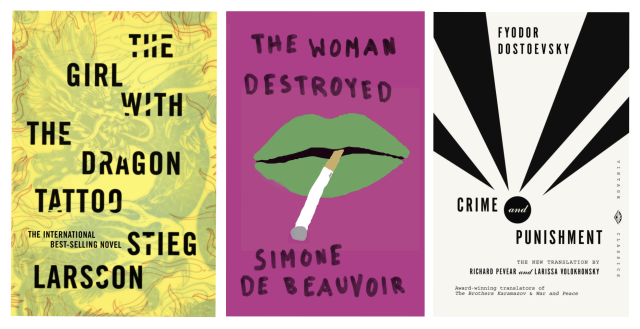I love to read, and I also love to imagine how I might design a book’s cover once done reading it. So, what about those creatives out there who actually design the covers for the books we read?

I hope to look at numerous graphic designers who have worked with book publishers, and I will start with Peter Mendelsund. You will have seen Mendelsund’s work wether you’re aware of it or not. He has crafted covers for many writers of a range of genre, and with a wide range of target demographic to boot, but all of the authors’ works that I have seen he has created covers for, are all either the break-out writers of contemporary fiction we see in the charts, or the long-dead, wold-famous writers who’s works we’re generally encouraged to read throughout our lives. More or less, Mendelsund rebrands the already popular books.
We can say that Mendelsund doesn’t always need to imbue his covers with the power to sell the books – they can sell themselves, regardless. But does he still give it his all to market the books though their covers? Let’s take a look at a small handful to get a feel.

Stripped down, “The Trial” is a tale of a man who is arrested and prosecuted for crimes that are neither revealed to the protagonist nor the reader. You can interpret the work as a critique on bureaucracy and civil rights, if you want. I like this cover because the complementary colours (red and blue) really make the irises pop. The rows of eyes give off an uneasy feeling – great, because Kafka’s works are full of unease for the protagonist as well as the devoted reader. Unsurprisingly, all of the books Mendelsund created for this line include the eye motif. I think it’s clever, and I think it works.

I feel that Tezuka deserves an entry on his own, or maybe when discussing sequential art. In any case, this famous comic artist has made a plethora of works both kids and adults can enjoy. “Blackjack” is a medical drama aimed at young adults. Note that Tezuka himself had studied medicine in order to become a medical doctor himself before changing careers; this gives his art a very authentic feeling, even if the fantastic medical procedures covered would not be feasible at all in real life. Mendelsund made a series of covers for Vertical’s western release of Black Jack. I feel that the main point of interest is in the centre of each cover. The jackets are of bright, flat colours, and the diamonds cut into the centre of each book’s cover reveal underneath a heavily-detailed, monochrome drawing of Tezuka’s, sometimes being a medical illustration. I like that tactile reinforcement of the books’ surgical element.

This book is a semi-autobiographical take on Dostoevsky’s experiences as a prisoner in one of Siberia’s labour camps. The protagonist, a nobleman turned convict, is sentenced to ten years labour for the murder of his wife. The bones are a visual cue for death but with their vertical positioning, double as jail bars, and the bleak colouring denote the tone of the book. This cover says what it needs.
Let’s look at a couple of books with visual puns! The covers really speak for themselves.

Yakumaru presents us with a series of short stories about a police detective. The reader is treated to the views of criminals to create an image of the protagonist. If you gave but only a passing glance to the cover, you may mistake the handcuffs for eyeglasses; that is the strength of the visual pun. I do like that the majority of the text here is in a gentle, soft script, leading to an emphasis of the book’s title with its bold, sans serif font.

“Things We Didn’t See Coming” is a post-apocalyptic novel full of disaster beyond the narrator’s control. Mendelsund plays with alignment to obscure our vision, strengthening the title’s message. The text is still legible, but we must surrender more of our time to the cover, and look just a little closer, in order to read it, lest we don’t see it. I don’t often look at book covers that are all text and think they’re great, but I can really appreciate the amount of consideration that must have gone into this cover design. To sell the story with text alone shows confidence.
I think with even the few book covers looked at, it’s obvious that Mendelsund does indeed want to show the onlooker and potential reader what the book contains and feels like. I think these are sincere covers showing Mendelsund’s understanding and appreciation on these author’s works. They display a designer’s versatility. At a glance these designs might seem ‘simple’, but they’re witty and aren’t dragged down by any unnecessary information.
If you made it to the end, thank you for reading! Do you think Peter Mendelsund’s book covers work? How do you feel about them? Love ’em? Hate ’em? Total indifference?
If you spotted any omissions, let me know! I’m writing to push myself to improve my written analysis of design.